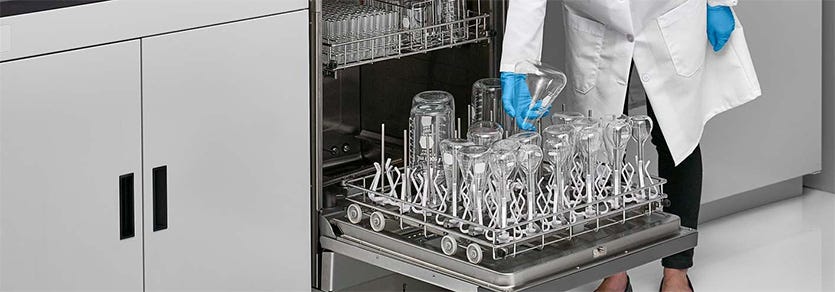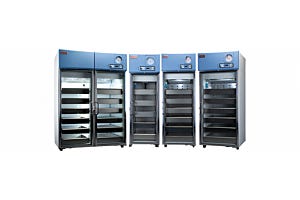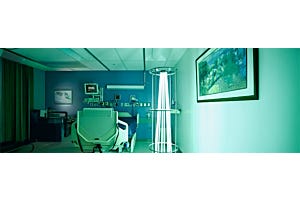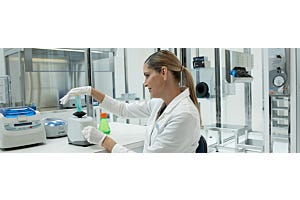The cleaning and sterilization of laboratory, clinical, surgical and compounding equipment is necessary to ensure patient safety and accurate results. In research laboratories, improperly cleaned or sterilized glassware and instruments opens the door to unwanted contaminants. Contaminated objects can also endanger laboratory personnel through exposure to mutagenic or toxic substances.
In clinical labs, contamination can lead to erroneous test results, jeopardizing patient treatment regimens or diagnoses. In surgical and pharmaceutical facilities, improper sterilization of equipment or compounding preparations can expose patients to a wide range of microbes and endotoxins. Thus, labs must develop and document washing and sterilization protocols that produce reliable results and ensure safety.
According to a Frost and Sullivan survey published in Lab Manager Magazine, 60% of laboratory budgets are spent on consumable products. Another 30% of the total budget is spent on plasticware, glassware and general laboratory supplies. Lastly, the average budget has steadily decreased since early 2010 while the price of consumable goods has increased substantially.1 Thus, in recent years, laboratory managers have pushed to move towards reusable goods (wherever possible) to compensate for this deficit.
While disposable plastic goods, instruments and glassware are a convenient and worry-free option, reusable goods are just as effective and can dramatically reduce costs when properly cleaned and sterilized. They have the added benefit of reducing waste disposal volume and fees.
Lab Washers
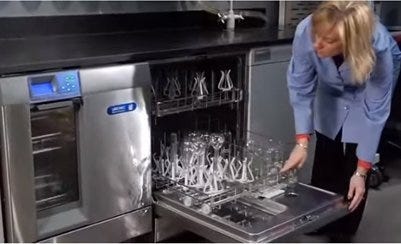
Under-counter labware washer, from Labconco.
Several laboratory equipment manufacturing companies have developed innovative solutions for washing labware. Residential and commercial dishwashers fall far short of providing the rigorous cleaning cycles needed to ensure the removal of contaminants found in labs. For instance, the dishwasher in your home has a single pump for both clean and dirty water, and does not contain an inlet water purification system. Thus, contaminants can easily infiltrate the washer.
By comparison, specialized laboratory washers are equipped with dual pumps and stringent purification systems to ensure that only contaminant-free, unrecycled water is used in the cleaning process.
The uncommon shape of laboratory glassware also presents a problem when using conventional washers. Erlenmeyer flasks, graduated cylinders, and many other labware products are uniquely shaped to serve a particular function within the lab. Home- and commercial-use washers are not designed to provide adequate cleaning of these supplies. Many laboratory washers are outfitted with spindle washers that introduce water directly into narrow-necked labware.
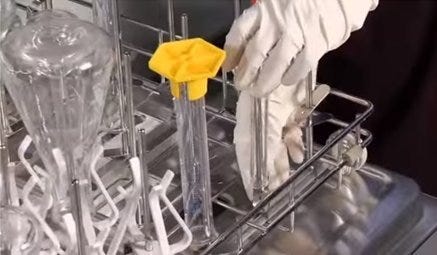
Lab washer designed for the unique shapes and sizes of flasks, tubes and cylinders.
Lastly, residential washers typically heat water to between 130ºF and 170ºF (55ºC to 75ºC). This temperature range is too low to adequately sanitize reusable labwear. Laboratory washers have a higher heating capability (180ºF -200ºF), which is more effective for sanitation. Thus, a lab washer provides an excellent option for both reducing expenditures on consumable goods, and ensuring clean supplies for subsequent use.
Autoclaves
Autoclaves utilize a combination of high temperature and pressure to effectively sanitize a wide range of laboratory, surgical, clinical and pharmaceutical instruments. To kill some microbial contaminants, such as sporulating bacteria and endotoxins, the use of heated water and detergents (as in lab washers) is ineffective.
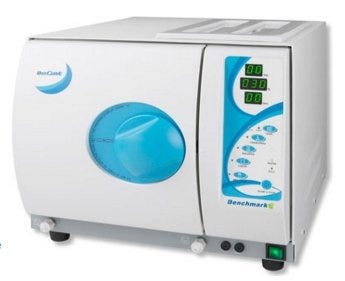
BioClave™ Autoclave from Benchmark Scientific
In molecular, biochemical, and microbial research labs, carryover of microbes from previous experiments can contaminate reagents and samples, leading to invalid outcomes. Surgical and pharmaceutical settings require properly cleaned instruments and compounding supplies to reduce risk of infection. Therefore, autoclaves are typically used for sterilization prior to washing.
Autoclaves are manufactured in a range of sizes, including large free-standing units for facilities with high-volumes or over-sized items. Compact benchtop models are used in small surgical and dental sites. These machines contain failsafe mechanisms to guarantee that sufficient temperature and pressure are achieved to consider the labware “sterilized” upon completion of the cycle.
Additionally, many suppliers offer color-changing, bacterial spore-containing indicators that help technicians determine if an item is effectively decontaminated. Placing biological indicators into the autoclave can add an additional layer of protection to ensure proper sterilization.
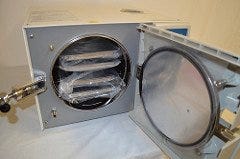
Benchtop autoclave.
A study from the British Journal of Dentistry showed that after a single day’s use, the level of gram-negative bacteria, as well as endotoxins, reached unacceptable levels in benchtop autoclave water reservoirs.2 Thus, not only is ensuring proper operation of an autoclave critical, but regular, daily maintenance is required to ensure patient safety.
The Bottom Line
The use of both autoclaves and labware washers are highly recommended for research, pharmaceutical, clinical, and surgical facilities alike. Sanitizing and sterilizing labware reduces risk to patients and ensures contaminant-free experiments. Labs can reduce expenditures by minimizing the amount of single-use goods they purchase, and associated disposal fees.
Other money saving benefits? Many lab washers are energy-efficient and feature mechanisms to reduce water usage. When taken in conjunction with the reduction in plastic waste, these products provide an environmentally friendly option while maintaining the integrity of your experiments, procedures, and manufactured goods.
See more about Autoclaves, Sterilizers and Washers at Laboratory-Equipment.com.
References:
- Witonsky, J. “Laboratory Spending Trends” Lab Manager Magazine. Nov, 1 2011. pp 8-12.
- Martin and Dailey “A preliminary investigation of the microbiology and endotoxin content in the water reservoirs of benchtop non-vacuum autoclaves.” British Dental Journal. 191, pp 622-624 (2001).



